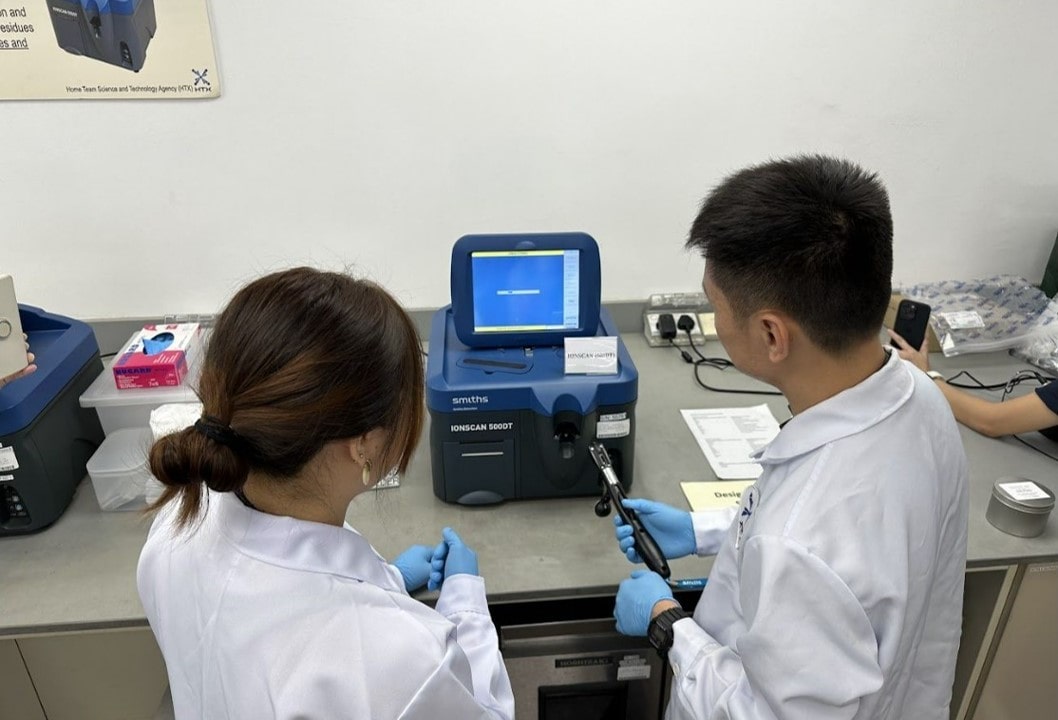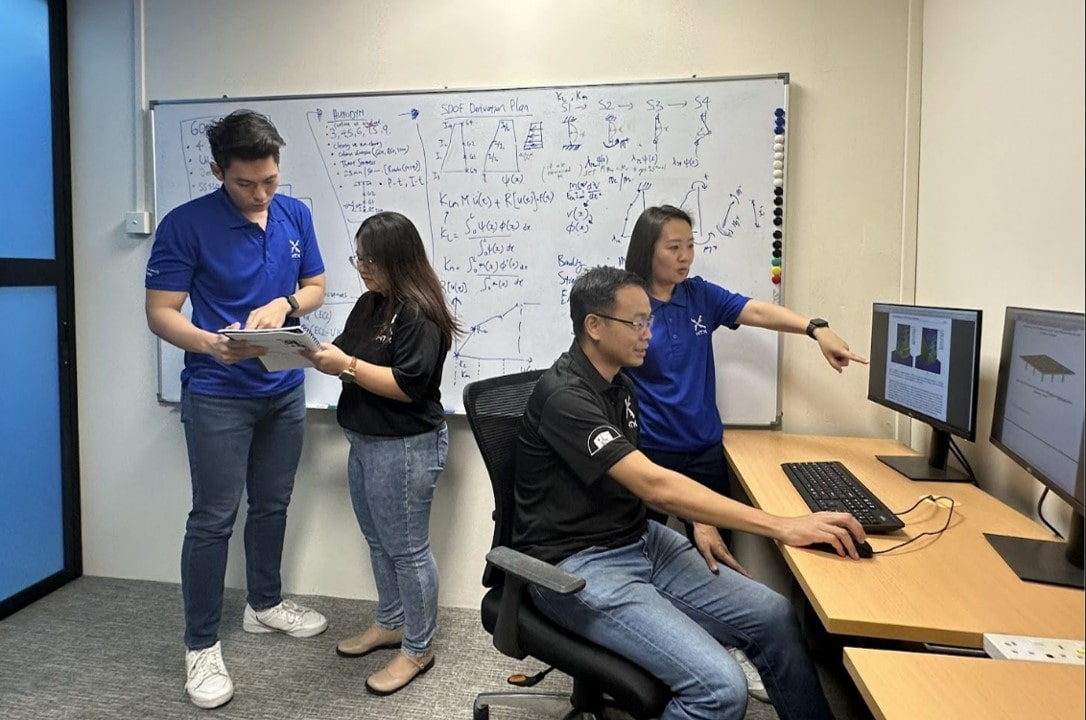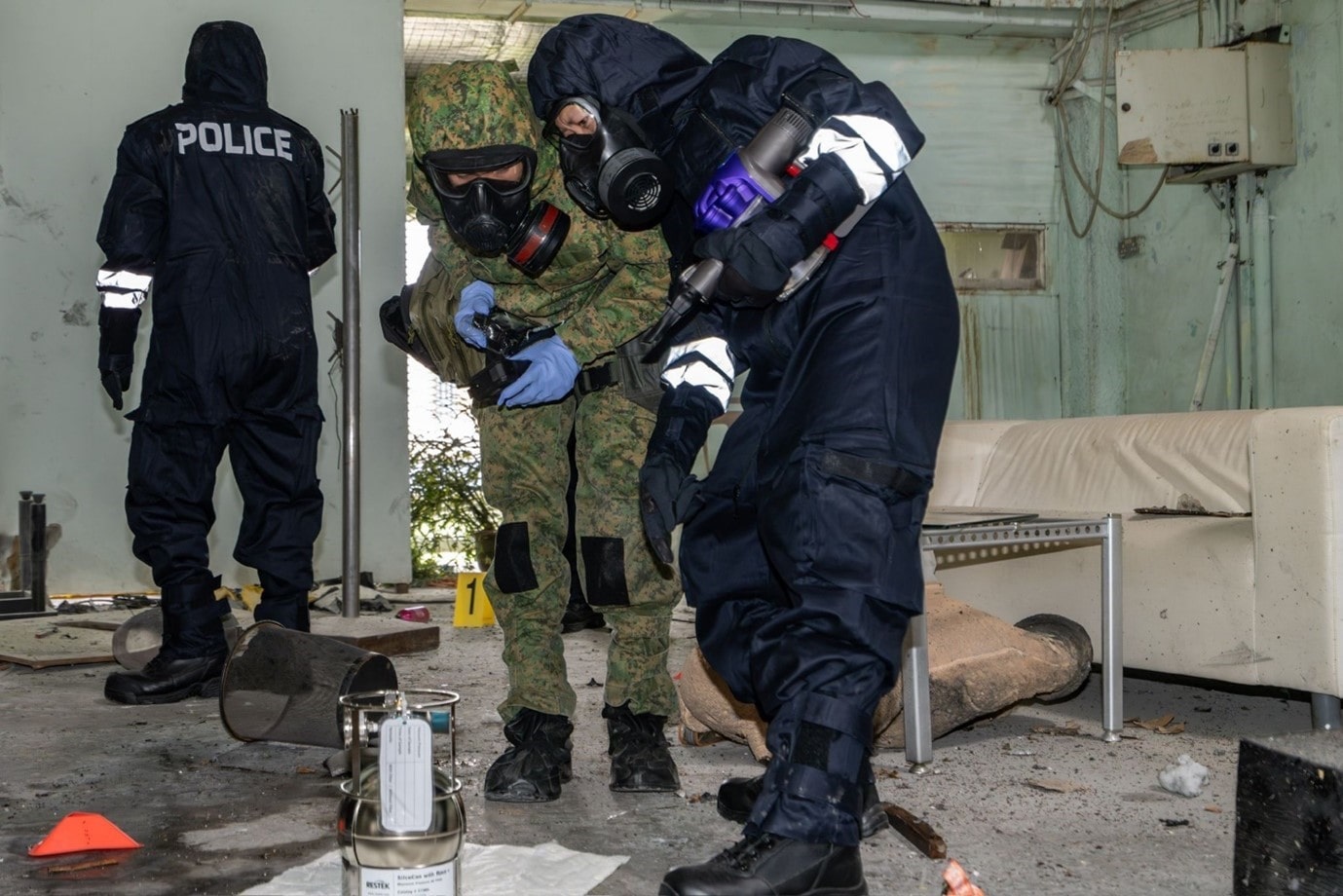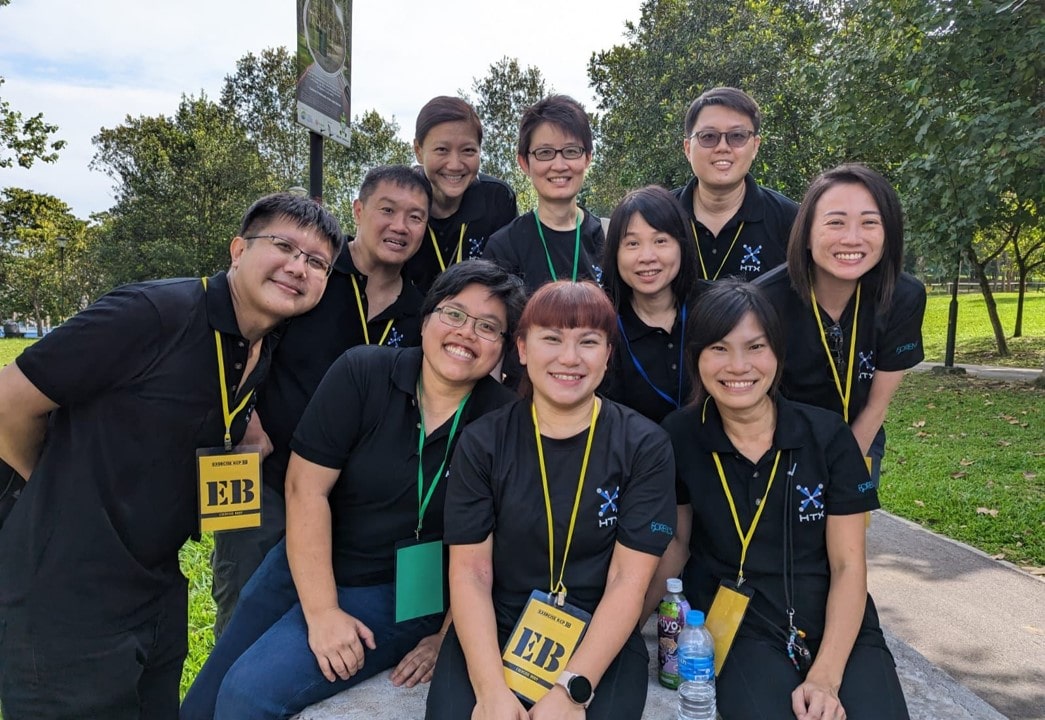
Marina Bay was the target of a foiled terrorist plot in 2016. (Photo: Eli Mirasol/Pexels)
In 2016, a group of militants were arrested by the Indonesian police in the nearby island of Batam, foiling their plot to fire a rocket at Marina Bay. What would have happened if this plot had succeeded? Apart from our counterterrorism agents who worked with their counterparts in Indonesia to stop the rocket attack, Singapore’s security agencies work together to provide different layers of defence against such threats. Let’s learn how HTX’s scientists and engineers do their part to protect Singapore against these dangers.
At Singapore’s border checkpoints, scientists from HTX’s Chemical, Biological, Radiological, Nuclear, and Explosives (CBRNE) Centre of Expertise (CoE) work hard to test the samples collected by officers from the Immigration & Checkpoints Authority (ICA) for explosives and other hazardous substances. CBRNE CoE’s network of IEC/ISO 17025 accredited laboratories are equipped with gold standard analytical instruments to verify the presence of CBRNE materials in samples submitted by the other Home Team departments.
 Is this sample an explosive? (Photo: HTX)
Is this sample an explosive? (Photo: HTX)
The objective of CBRNE CoE deploying many detection technologies in Singapore’s border checkpoints is to help ICA intercept any unauthorised or illegal import of dangerous substances into Singapore. Such substances include fertiliser with high nitrate content, as these can be used to manufacture powerful fertiliser bombs such as that which was used in the deadly 1995 Oklahoma City bombing which killed 168 people.
On 9 October 2023, a truck carrying fertiliser attempted to pass through Woodlands Checkpoint. The CBRNE lab at the checkpoint tested a sample of the truck’s fertiliser shipment and found that the nitrate content for the fertiliser was 31.7%, which is much higher than the legal limit of 28%. As the importer did not have a licence to import fertiliser with a high nitrate content, the truck was denied entry into Singapore. Such detections by CBRNE CoE together with ICA officers at the checkpoint are important as the potassium nitrate found in fertiliser can be used to make powerful explosives if it falls into the wrong hands.
CBRNE CoE has also built the HTX OCR Mobile Application (HOMA). HOMA has been incorporated into ICA’s system for officers to scan the ingredients list of imported goods for the presence of precursor chemicals. Such precursors can be used in the manufacture of dangerous substances like explosives.
But what if terrorists manage to smuggle enough precursor chemicals into Singapore to build a bomb? HTX’s Building and Infrastructure (B&I) Sustainment Centre (SC), Protective Security and Safety (PSS) CoE, and the Singapore Police Force (SPF)'s Centre for Protective Security (CPS) work together to ensure critical infrastructure and iconic buildings in Singapore are protected by security measures and hardened against explosions.
For example, the structural columns of these buildings can be strengthened by increasing their dimensions/reinforcement ratio or through steel jacketing. Such measures will ensure these buildings will not suffer structural collapse should they be hit with terrorist attacks like car bombs.
 PSS CoE blast engineers Ms Koh Su Wen and Mr Chiew Yi Peng (in black), with their colleagues who are forward deployed to the SPF’s Centre for Protective Security, Mr Alvin Koh and Ms Bai Huishi (in blue). (Photo: HTX)
PSS CoE blast engineers Ms Koh Su Wen and Mr Chiew Yi Peng (in black), with their colleagues who are forward deployed to the SPF’s Centre for Protective Security, Mr Alvin Koh and Ms Bai Huishi (in blue). (Photo: HTX)
While B&I SC project manages the construction of the Home Team’s infrastructure and buildings, CPS ensures that the Home Team’s infrastructure and buildings satisfy the security requirements mandated by the 2017 Infrastructure Protection Act, and PSS CoE conducts the blast engineering research that is used to formulate the security guidelines that are enforced by CPS.
But what if an attack succeeds and a bomb goes off? In this dreadful scenario, the perpetrators and their sponsors must be identified and apprehended quickly, to prevent them from launching further attacks.
In the immediate moments after an explosive goes off, Explosive Ordinance Disposal (EOD) engineers from the Singapore Armed Forces (SAF) will enter the scene to conduct a search for a possible secondary explosive device. Meanwhile, emergency responders from the Singapore Civil Defence Force (SCDF) will rescue, decontaminate, and treat the casualties before conveying them to the hospitals. SCDF Hazardous Materials Specialists will also be deployed to decontaminate the scene and neutralise the remaining traces of harmful chemicals to render the area safe before responders from the other agencies enter the scene.
Besides the response by the SPF uniformed officers, the Bomb Technical and Investigation Team (BTIT) of HTX’s Forensics CoE will assess the scene, screen for explosive residues, and provide their preliminary findings to the investigators.
At the same time, Forensics CoE’s Crime Scene Specialists (CSS), who consist of forward-deployed HTX officers to SPF Forensics Division (FD), will perform an initial assessment, with a focus on identifying the possible cause of explosion and type of explosive or improvised explosive device (IED) used. The post-blast scene management and processing will subsequently be taken over by the Crime Scene Specialists (CSS) in FD whereby critical evidence is recognised, documented, preserved, and collected in accordance with scientific and legal requirements.
 SPF, HTX and SAF officers assessing a post-blast scene. (Photo: SPF)
SPF, HTX and SAF officers assessing a post-blast scene. (Photo: SPF)
A post-blast scene is a critical scene of chaos containing widespread debris. Being able to document and make sense of a post-blast scene in a timely manner – especially during the ‘golden window’ when evidence is still available to be collected – is critical to investigations.
Forensics CoE is currently working with both internal and external partners to mount high resolution cameras and specialised sensors onto unmanned aerial and terrestrial devices. At HTX innovation centre Hatch’s recent Open Innovation Challenge demo day, Forensics CoE and its industry collaborator successfully demonstrated the use of special drones that can mount image-capturing devices on walls and other surfaces.
Having visual access to the scene, while the SAF and SCDF are still on scene or even before, is critical for preliminary planning and assessment. Having video feeds that are transmitted to mobile command centres for real-time viewing and monitoring will also greatly assist investigators in their planning and decision making.
 Forensic scientists from Forensics CoE. (Photo: HTX)
Forensic scientists from Forensics CoE. (Photo: HTX)
To further enhance their scene processing and information gathering capabilities, Forensics CoE is conducting research on various fronts, including exploring new technologies and developing novel techniques and solutions. For example, they are studying the use of Artificial Intelligence (AI) to expedite and improve the search for exploded IED components in a mess of blast debris. Forensics CoE is also investigating specialised sensors which will allow the tiniest amounts of explosive residues – including explosive precursors and intact or combusted explosives – to be detected, which will serve as crucial evidence for investigators.
These different areas of research are key to providing actionable forensic evidence for investigators to establish the elements of an incident and identify critical leads which can lead to the capture of the perpetrators before they have a chance to flee the country or mount additional attacks.

